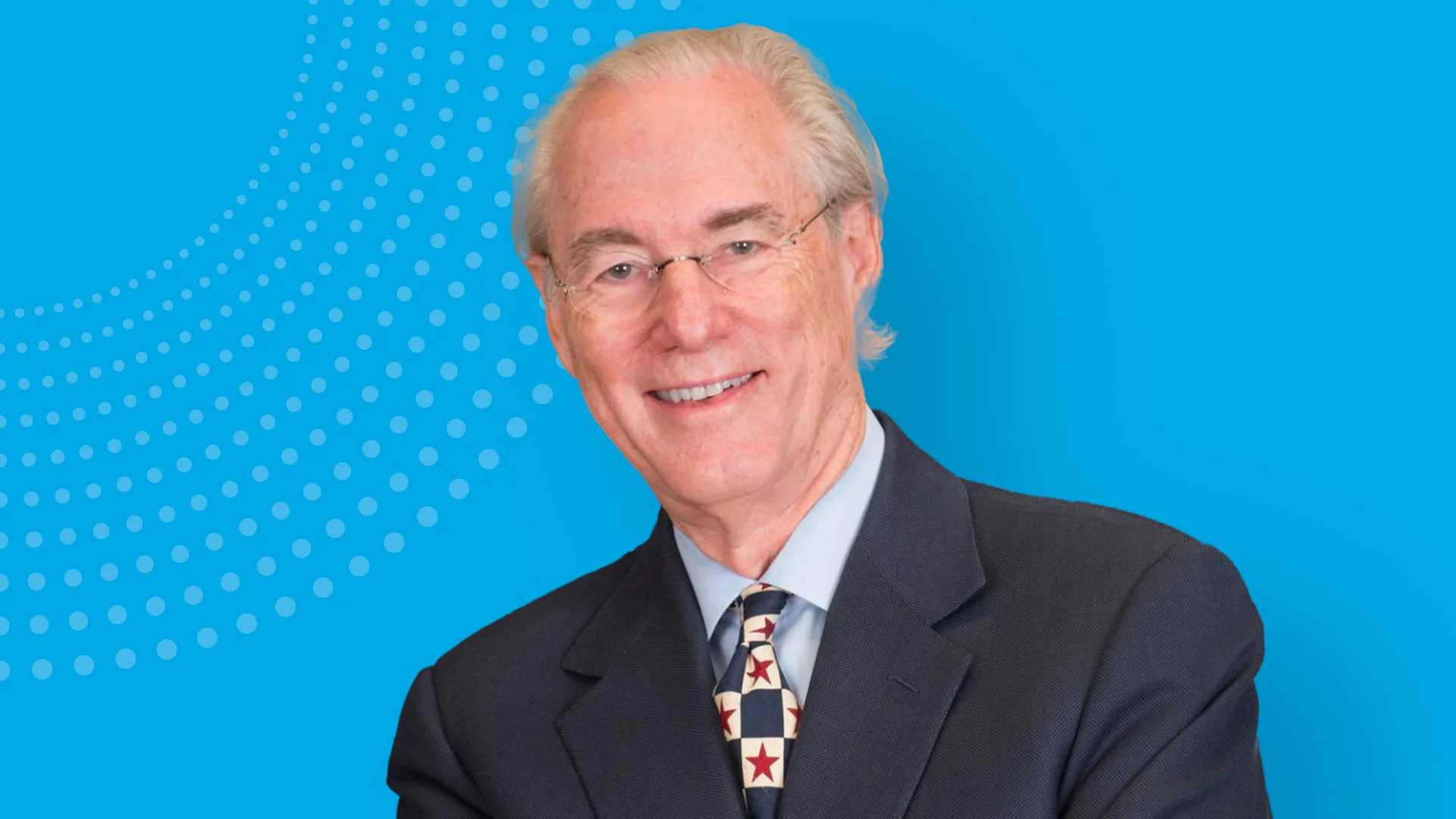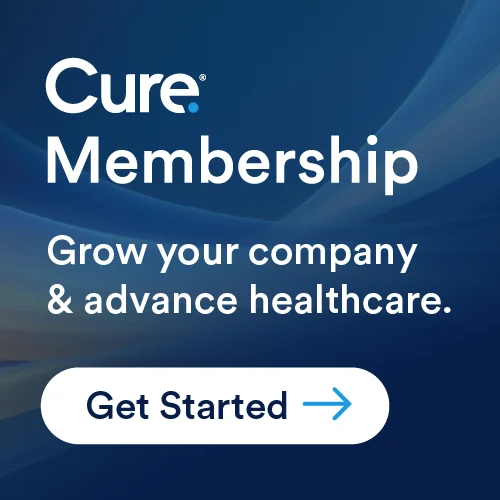
Overview
Advocacy organizations like UsAgainstAlzheimer’s work to disrupt and diversify the status quo of research, prevention, early detection and diagnosis, and access to treatment.
Raising awareness, funding to stop the disesae
An estimated 50 million adults worldwide are living with Alzheimer’s disease or another dementia. In the U.S., one in nine adults (10.9 percent) aged 65 and older has Alzheimer’s dementia. Because a cure remains elusive, advocacy organizations like UsAgainstAlzheimer’s are working to disrupt and diversify the status quo of research, prevention, early detection and diagnosis, and access to treatment for everyone.
Through urgent and inclusive mobilization, UsAgainstAlzheimer’s has worked to increase funding for Alzheimer’s and dementia research. UsAgainstAlzheimer's also focuses on raising awareness about the impact of Alzheimer's and aims to create a global movement to stop the disease.
Chairman and co-founder of UsAgainstAlzheimer's, George Vradenburg, JD, recently shared with Cure the organization's mission and eight things to know about its patient-centered activities.
1. What is UsAgainstAlzheimer’s?
UsAgainstAlzheimer's is a nonprofit organization committed to ending Alzheimer's disease by advancing research, advocating for policy changes, and providing resources to families and caregivers affected by the disease.
2. Why did you create the organization? What is its mission?
George and his wife, Trish Vradenburg, founded UsAgainstAlzheimer’s in 2010 after their personal experience with Alzheimer’s, which motivated them to act. They recognized the need for a more aggressive, patient-centered movement to combat the growing Alzheimer’s crisis, which impacts millions of individuals and their families worldwide.
They wanted UsAgainstAlzheimer’s to be different and disruptive. Therefore, they entered the fight with a new approach, believing that a patient/caregiver-led organization could convene a wide range of people, businesses, organizations and government – all of ‘Us’ – to a shared mission, shared priorities and shared mechanisms for action; and to make a difference.
3. What is the mission of UsAgainstAlzheimer’s?
UsAgainstAlzheimer's mission is to end Alzheimer’s disease by advancing research for new treatments, driving public policies that improve care and resources, and providing advocacy and support for individuals and families affected by the disease. The organization does this by
Accelerating research and innovation in Alzheimer's prevention, treatment, and cures.
Promoting policies that improve funding for research, caregiving support, and public awareness.
Creating a global movement to stop Alzheimer’s by engaging diverse communities, from scientists to patients and caregivers.
4. How does the organization build community? How do you work with your partner organizations?
As influencers and innovators, UsAgainstAlzheimer’s gives voice to patients and caregivers. The organization advances a strong, engaged community through several initiatives that connect individuals, caregivers, patients, and advocates.
UsAgainstAlzheimer’s also collaborates via partnerships to amplify its messaging and impact. These include corporations, foundations, government agencies, scientists, and allied organizations to combat this disease at every angle. Through these collaborations, UsAgainstAlzheimer’s is creating a broad, unified force against the disease, mobilizing resources and collective action to end Alzheimer’s.
5. You've helped develop several transformative initiatives to address significant issues in Alzheimer’s research. Tell us more about these.
UsAgainstAlzheimer’s has led initiatives addressing critical research challenges, particularly in clinical trials, global collaboration, and ensuring systems are prepared for new treatments. These initiatives are designed to accelerate the development of effective therapies and improve patient care.
One of the major barriers in Alzheimer’s research has been the slow and under-representative enrollment in clinical trials. UsAgainstAlzheimer’s addressed this with:
AD-PACE (Alzheimer’s Disease Patient and Caregiver Engagement Initiative). This initiative assesses and compiles patient and caregiver input in clinical trial design to ensure trials are patient-centered and address what matters to people affected by Alzheimer’s disease.
A-LIST. This network of over 8,000 individuals affected by Alzheimer’s provides real-time data on research and trials. UsAgainstAlzheimer’s shares its findings with policymakers, researchers, health care providers, public health officials, drug developers, insurers and others who serve this community to ensure they consider these insights when making decisions affecting people living with the disease and their caregivers.
Diversity in Clinical Trials. To increase diverse representation in Alzheimer’s research, UsAgainstAlzheimer’s encourages broader participation in trials from underrepresented communities disproportionately affected by Alzheimer’s.
6. Your organization is global. Tell us about your networks and how building diverse communities helps your mission.
UsAgainstAlzheimer’s, along with its sister organizations, including Davos Alzheimer’s Collaborative, is helping build an innovation ecosystem that will help accelerate, develop and scale promising solutions and strive to equip healthcare systems to end Alzheimer's disease everywhere.
Also, to counter confusing or misleading information, The Center for Brain Health Equity at UsAgainstAlzheimer’s works to create relevant and fact-based materials for Latino and Black audiences. As the U.S. population ages and becomes more diverse, the organization is working to accelerate efforts to promote brain health across the lifespan through culturally tailored, data-driven public health strategies and partnerships.
7. What has UsAgainstAlzheimer’s planned as new initiatives for 2025?
UsAgainstAlzheimer’s 2025 initiatives will focus on advancing Alzheimer’s research, improving care, and expanding advocacy efforts. The organization’s new initiatives are expected to include increasing brain health awareness, early detection resources and health equity and access.
Specifically, UsAgainstAlzheimer’s will expand its reach with new digital tools for early cognitive screening and public awareness campaigns. These tools will help educate individuals on brain health, encourage earlier detection of cognitive decline, and make proactive measures accessible to all.
Also, UsAgainstAlzheimer’s will advocate for policies that address disparities in Alzheimer’s care and research participation. This work will include a push for broader inclusion of underrepresented communities in clinical trials and ensuring equitable access to affordable and quality care.
8. How can someone join UsAgainstAlzheimer’s or get more information?
We encourage people to sign up for updates and newsletters at the UsAgainstAlzheimer’s website to stay informed about the latest research, advocacy opportunities, and events.
People also can become members, which helps provide financial support to help stop Alzheimer’s.








